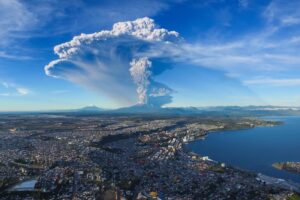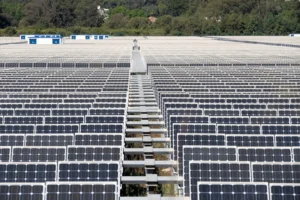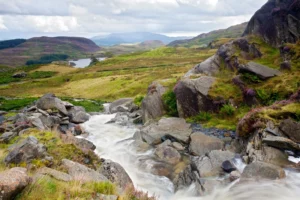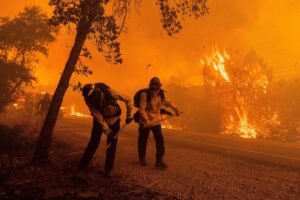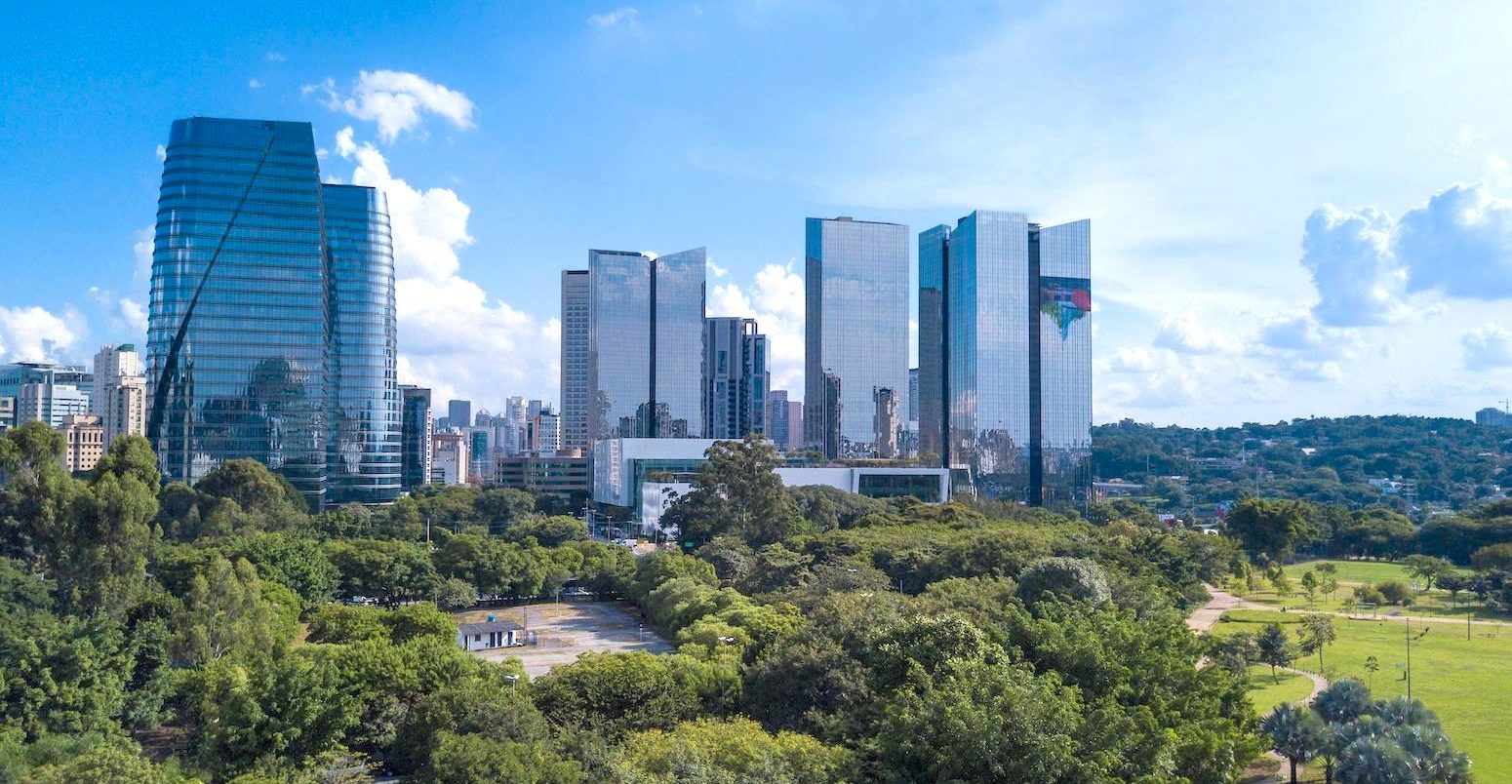
Guest post: How can nature-based solutions help cities achieve their climate goals?

Sean Goodwin
01.30.23
Sean Goodwin
30.01.2023 | 4:00pmTwo things are clear from the recent UN climate change and biodiversity summits: “nature-based solutions” appear here to stay, and not everyone is happy about it.
Delegates fought fiercely over the inclusion of these words in the outcomes of the leading intergovernmental processes on both climate change and biodiversity governance. But can research help identify and clarify points of tension in how nature-based solutions (NBS) are used? In our new paper in Nature Sustainability, we tried to do just this.
Defining ‘nature-based solutions’
When I talk about my research on NBS to people, I often get puzzled looks. Even if they’ve heard of the phrase, people find it to be such a vague term that they often do not really know what it means. What counts as “nature” and which problems need “solutions” is up for interpretation – and not everyone agrees.
The International Union for the Conservation of Nature (IUCN) defines NBS as “actions to protect, sustainably manage and restore natural and modified ecosystems that address societal challenges effectively and adaptively, simultaneously benefiting people and nature”.
The heart of the controversy around this term goes way beyond the words alone, though. Critics of the term NBS question why it has replaced “ecosystem-based approaches”, when the latter term was already formally defined (pdf) under UN processes more than a decade ago.
The definition of ecosystem-based approaches entrenched long-fought-for rights-based approaches that provide minimum safeguards to ensure socially just processes and outcomes are achieved through actions on biodiversity loss and climate change. Critics worry that these rights-based approaches are left out of the NBS conversation.
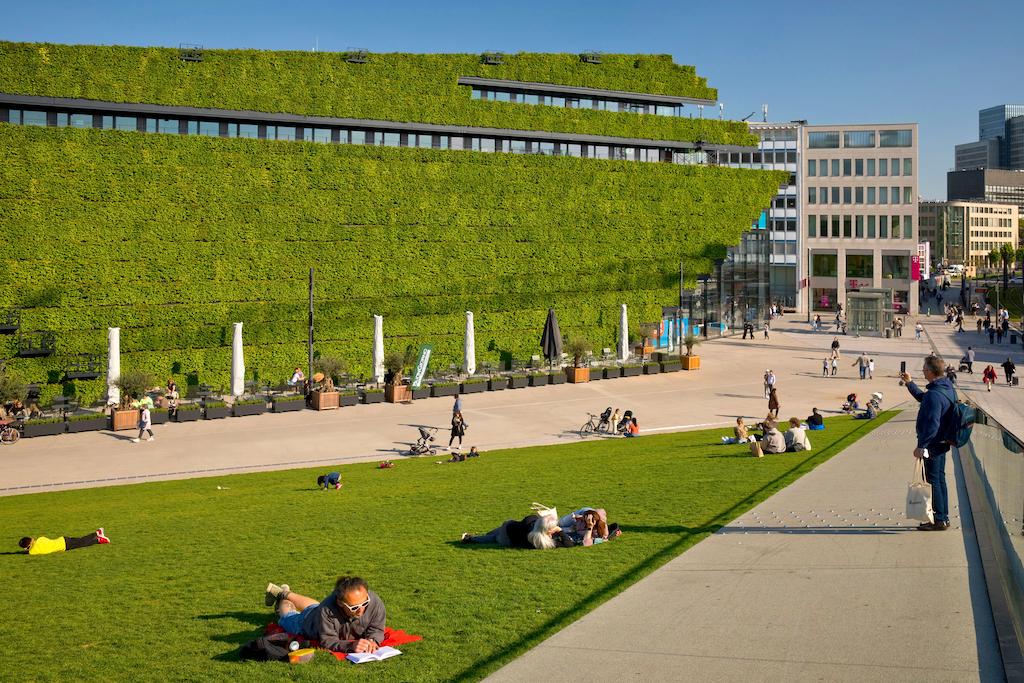
In our work, we take a closer look at what NBS are trying to achieve in cities around the world. In cities, these projects can look like many things – from urban parks that help redirect run-off during heavy rain events or provide shade on a hot day, to mangroves and even artificial reefs along the coastal zones of cities to help protect them against worsening storm surges and sea level rise.
We looked at a range of terms that are often used to describe NBS projects, such as ecosystem-based adaptation or disaster risk reduction, green and blue infrastructure and many others.
We did this for two reasons. The first was that we wanted to gauge how well any projects that could count as an NBS measure up to their claimed potential to confront “societal challenges” and how exactly they provide “benefits to people and nature” to promote long-term change across a diverse range of cities. The second was to try to expand on the knowledge about how NBS work in cities outside of the global north.
It is clear from the IUCN’s definition that NBS can be designed to do many things. The benefits they can provide all depend on what particular challenges they are designed to face.
Today, there is growing scientific consensus that the causes – and, therefore, the solutions – of climate change and biodiversity loss are tightly linked, and have massive implications for how people in cities live their lives. To really understand what NBS do, we need to look at how they try to provide benefits for climate change, biodiversity and society – all together.
Socially just processes
One of the key areas of controversy surrounding NBS is whether, and how, the communities affected by their implementation are consulted and benefit from the projects.
In our work, we looked specifically at how NBS try to proactively address the potential for social injustice. This included how people were included in design and implementation processes, how these processes acknowledged and accounted for the perspectives of diverse and marginalised groups in the city and how projects addressed the possibility that NBS benefit some but burden others – for example, if people are to be displaced by the project, how are they compensated?
We searched for projects in nine online databases established by various international organisations and climate funds that store information on the NBS projects they have funded or implemented all over the world.
Including a range of people (such as getting input from citizens as well as experts) in design processes was common, occurring in around 82% of all of the projects in our analysis, but other kinds of social justice were seen less often. We could find evidence in only 28% of projects on how they actually included these different perspectives from marginalised groups within NBS design, and around only 20% appeared to balance potential benefits and burdens resulting from the project.
This is not to say that NBS do not have the potential to address all of these issues, however. Many projects in African cities, for example, accounted for more of these issues compared to other regions, suggesting that there is much to be learned from how NBS are designed there.
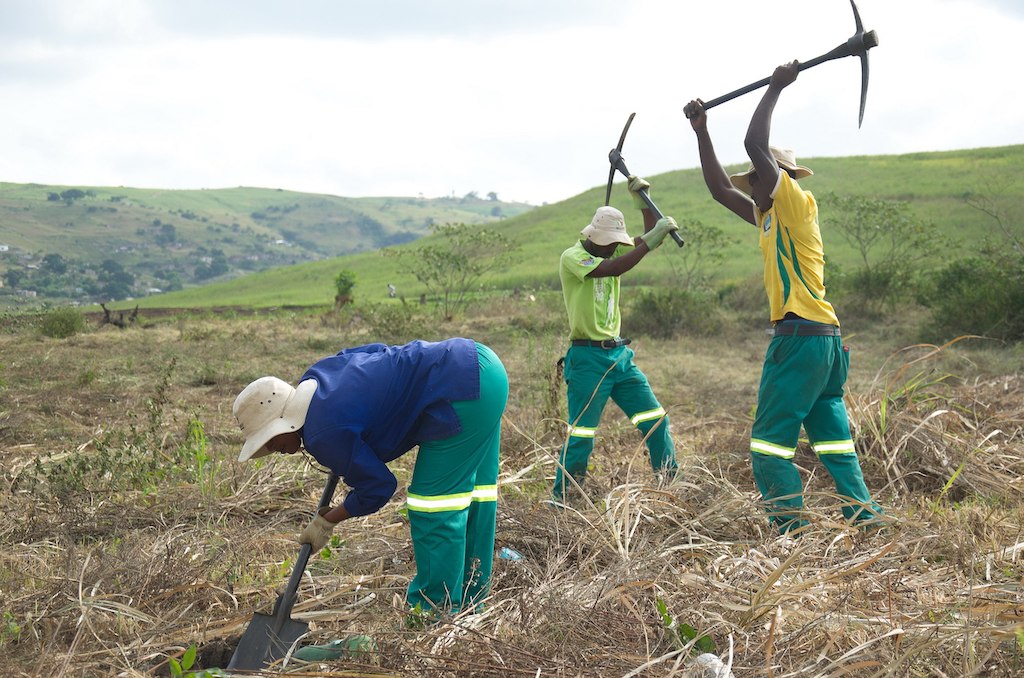
We also looked into which kinds of climate hazards, such as heatwaves or floods, NBS aimed to tackle and how NBS reduced the vulnerability of city dwellers to the impacts of these hazards.
Vulnerability is a complex area of research, but in our study, we were looking for a few simple things. Was the NBS described as trying to reduce the number of people exposed to climate hazards – such as by diverting intense rainfall to floodable parks – or did it go deeper?
For example, an NBS may further seek to reduce the severity of climate impacts or to empower communities with the tools to create their own adaptation strategies – helping people help themselves. Very few of the projects we studied did this – only 36% set a target of reducing the severity of impacts, and just 16% proposed developing the capacity for people to help themselves face climate impacts.
We also observed that the impacts of climate change on ecosystems within NBS were almost completely overlooked.
Only 2% of the studied projects looked at how individual tree or plant species involved in NBS were themselves vulnerable to changing climatic conditions. This is even though an increasing amount of urban tree species are threatened by climate risks, such as droughts and rising temperatures.
If these ecosystem functions are damaged by climate change, it follows that they can no longer provide the adaptive benefits they were designed for.
How do NBS ‘change’ cities?
The answer to how NBS “change” cities gets very philosophical very quickly. It all comes down to what it means for something to change in the first place. In cities, change can happen incrementally over decades, without anyone really noticing day-by-day, or it can happen in the blink of an eye.
We tried to engage with this complexity by assessing the capacity for NBS to have long-lasting impacts on different parts of urban life. We wanted to know, for example, even if an NBS seemed to have a big impact on the natural environment in cities, what did it do to its people, or its infrastructure?
We found, perhaps unsurprisingly, the largest area of long-term change was in the ecology of cities (they are, after all, “nature” based solutions). Comparatively fewer NBS seemed to show the capacity for lasting impacts on their societies and their infrastructure. Most projects we studied occupied a middle space – they were an improvement on the status quo, but they did not quite reach far enough.
The chart below shows the projects we studied, classified by their capacity to produce change, coloured by the timescales of this change – from incremental (pale green) to transformational (dark green). The top set of charts shows the statistics for the projects along technical, social and ecological dimensions, while the bottom sets of charts further break the projects down by geographic region.
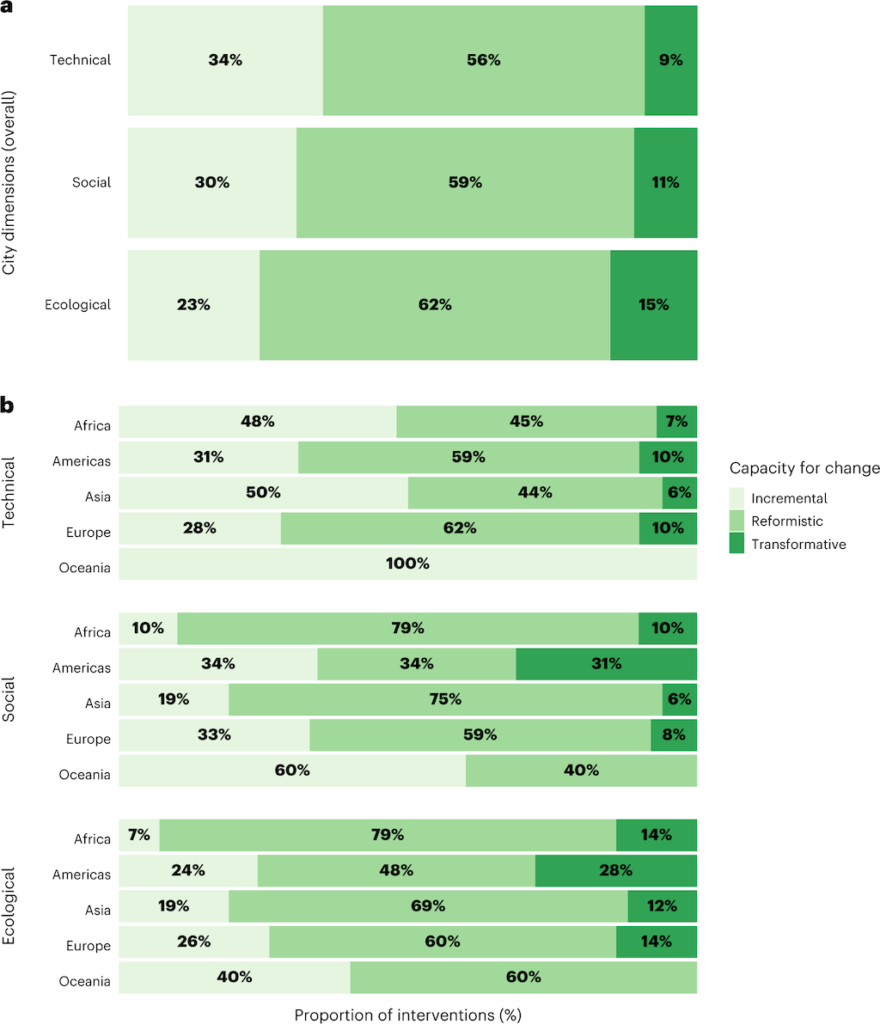
This was not the same in every region of the world. For example, we found that Latin American and African cities are leading the way in redefining the relationship between people and nature in cities in an enduring way.
Many projects in these regions had big ambitions and often involved sweeping reforms to urban planning regimes to not only improve the lives of some of their most vulnerable residents, but also the place of nature in the lives of urban dwellers.
Going forward, our research shows that NBS need to take greater care with how they plan for preventing socially unjust outcomes. That is not to say our data suggests that all current urban NBS are somehow “unjust”.
As much of the work our study is based on shows, the best chance we have to avoid unjust outcomes is to proactively seek to prevent them. The same can be said for vulnerability, both human and non-human. As climate impacts worsen and become less predictable, a more holistic view of how they affect our lives is critical.
More work is needed to make visible the efforts of diverse communities across the world who are using NBS. Even though we tried to be as wide-reaching as possible with our approach, it was still the case that the majority of projects that we studied were from cities in the global north, mostly in Europe.
The map below shows the distribution of the urban NBS projects included in our study.
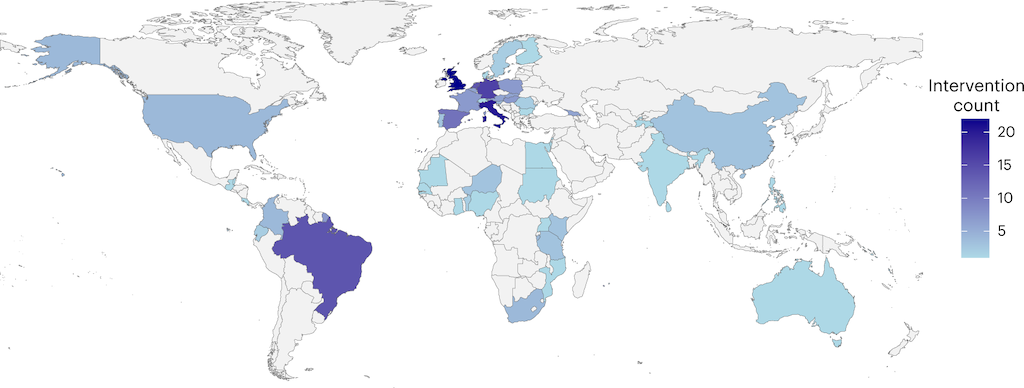
The reason for this is the amount of information that is available across regions, and further efforts need to be made to make projects from under-represented regions more visible.
Work is starting in this regard. For example, the Equator Initiative and PANORAMA (both used as sources of information for our data collection) both aim to better document NBS in the global south. The Urban Nature Atlas, which originally focused on Europe, is also making an effort to extend its reach across other regions.
This will be critical to ensure no voices are left unheard on how NBS work – or do not work – and in which contexts they can be successful.
Goodwin et al. (2023) Global mapping of urban nature-based solutions for climate change adaptation, Nature Sustainability, doi:10.1038/s41893-022-01036-x
A read-only copy of the article can be accessed freely via this link.
The data that is the basis of this work is available for free and open-access online here. The work this article is based on is supported by a fellowship from ”la Caixa” Foundation (ID 100010434), with the fellowship code LCF/BQ/DI20/11780006, and María de Maeztu excellence accreditation 2022-2026 CEX2021-001201-M), funded by MCIN/AEI /10.13039/501100011033.
-
Guest post: How can nature-based solutions help cities achieve their climate goals?


